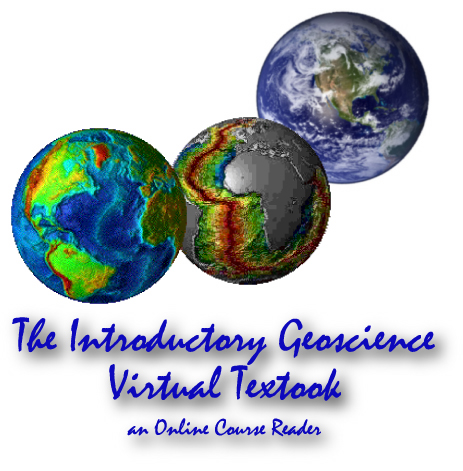Preface
The
power of the Internet has revolutionized how we all view the
world. It allows us to reach out and explore differing points of
view, pool the entire resources of the planet to answer questions and
gives us unprecedented access to data and expertise. This
powerful tool is also unwieldy. The flood of information is
largely unfiltered and can be burdensome to navigate. Search
methods commonly employed by the general public provide no safeguard or
warrantee that the information is accurate, timely, or relevant.
With the Internet becoming a more commonplace tool for student research these issues are of particular concern in education. This is true especially in the earth sciences, where conflicting information on politically sensitive issues of public policy populates cyberspace. Information that is scientifically accurate and relevant is sometimes difficult to ferret out from the vast quantity of digital resources available. It was in the spirit of addressing this need to provide access to quality digital resources for the community of learners of the earth system, that visionaries gathered in West Virginia in the summer of 1999. It was there that scientists representing the diversity of the earth sciences, educators, engineers, librarians, information technologists and government agency representatives met to create a framework for what would become the Digital Library for Earth System Education (DLESE). DLESE offers an online resource for exploration of the earth system and humanity's quest to understand its dynamics.
The Introductory Geoscience Virtual Textbook was created to take this approach to a next step. This resource represents an online reader and reference specifically designed to accompany an introductory geoscience course at the undergraduate level. It was compiled as a subset from the vast resources available online through DLESE. As editor I have had to make many choices of inclusion. These were governed by a sense of assessing the relevance and usefulness of each resource to the introductory learner of geoscience.
This volume represents version 1.0 and should be considered a work in progress. Many of the topical areas had adequate coverage in online resources, whereas others were sparse. It is hoped that these areas will be taken up by content creators and new materials will be included in future versions of The Introductory Geoscience Virtual Textbook.
Christopher DiLeonardo, Ph.D.
editor
Semptember, 2004
With the Internet becoming a more commonplace tool for student research these issues are of particular concern in education. This is true especially in the earth sciences, where conflicting information on politically sensitive issues of public policy populates cyberspace. Information that is scientifically accurate and relevant is sometimes difficult to ferret out from the vast quantity of digital resources available. It was in the spirit of addressing this need to provide access to quality digital resources for the community of learners of the earth system, that visionaries gathered in West Virginia in the summer of 1999. It was there that scientists representing the diversity of the earth sciences, educators, engineers, librarians, information technologists and government agency representatives met to create a framework for what would become the Digital Library for Earth System Education (DLESE). DLESE offers an online resource for exploration of the earth system and humanity's quest to understand its dynamics.
The Introductory Geoscience Virtual Textbook was created to take this approach to a next step. This resource represents an online reader and reference specifically designed to accompany an introductory geoscience course at the undergraduate level. It was compiled as a subset from the vast resources available online through DLESE. As editor I have had to make many choices of inclusion. These were governed by a sense of assessing the relevance and usefulness of each resource to the introductory learner of geoscience.
This volume represents version 1.0 and should be considered a work in progress. Many of the topical areas had adequate coverage in online resources, whereas others were sparse. It is hoped that these areas will be taken up by content creators and new materials will be included in future versions of The Introductory Geoscience Virtual Textbook.
Christopher DiLeonardo, Ph.D.
editor
Semptember, 2004
